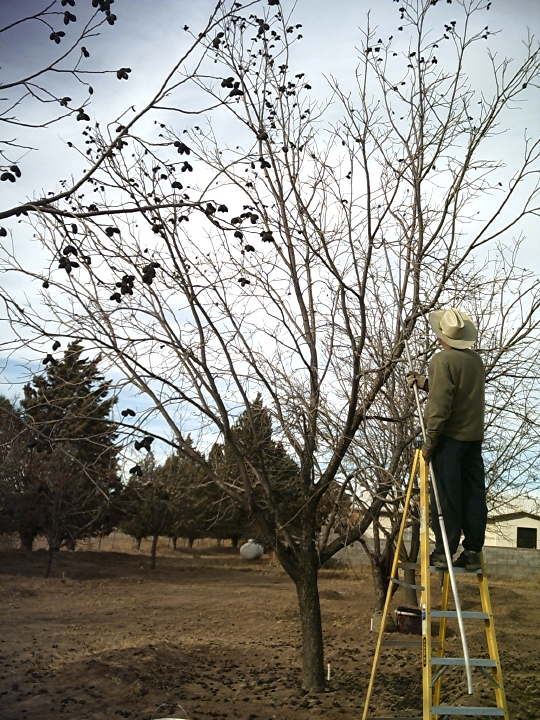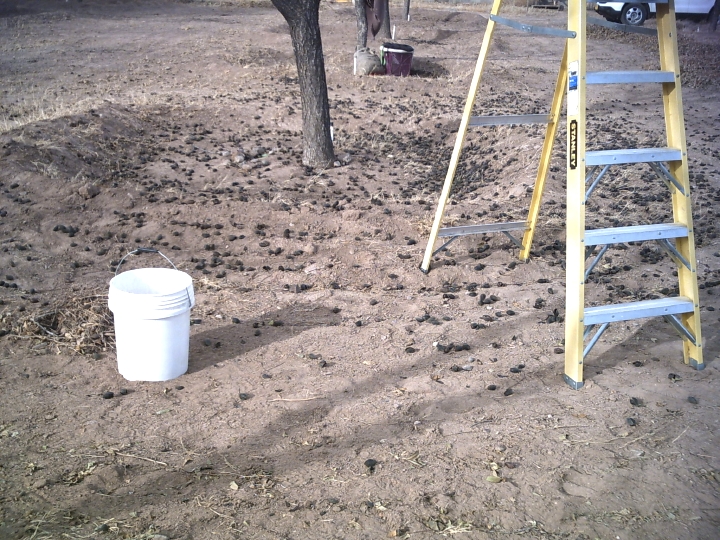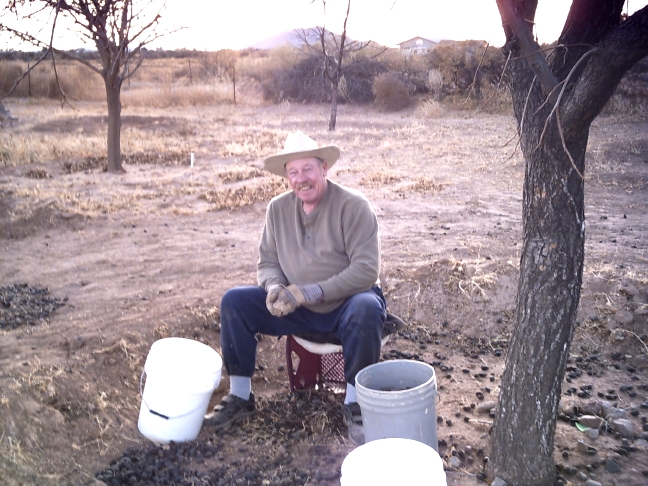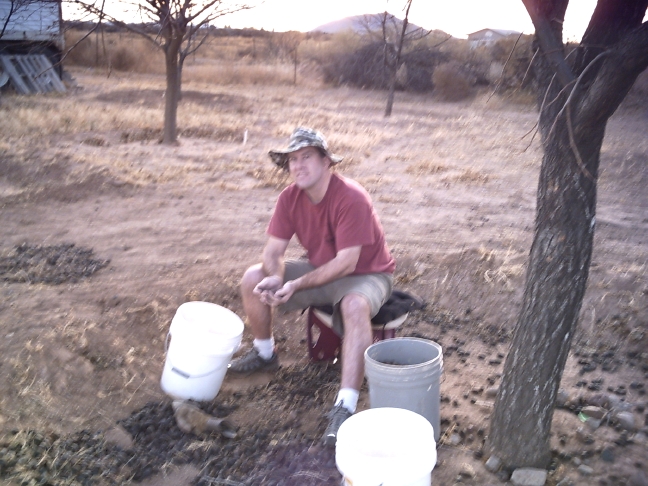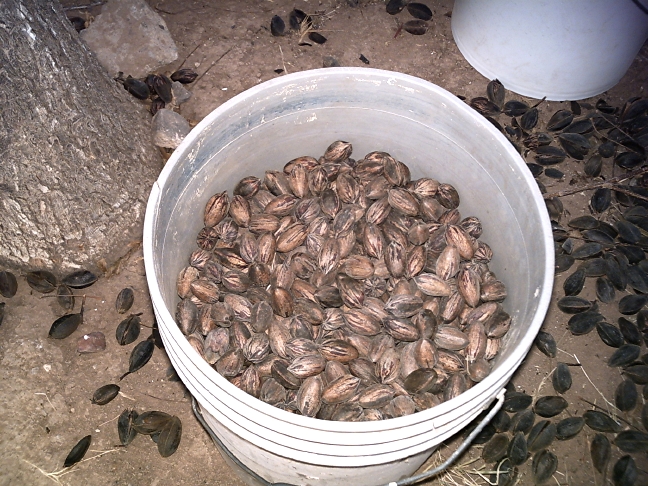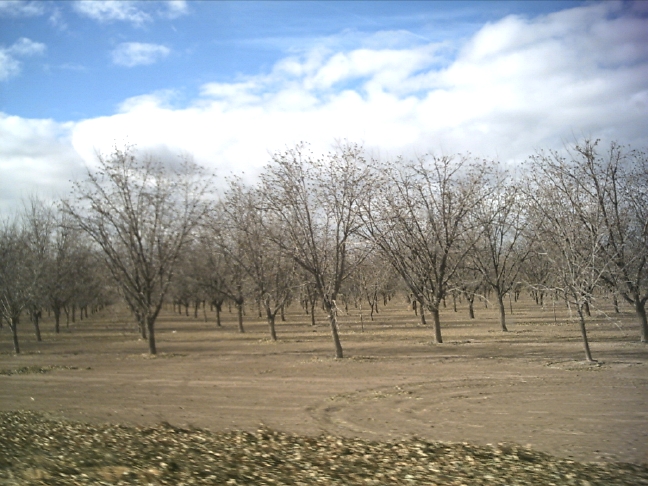I visited some relatives recently in the deming, new mexico area and of course took a lot of pictures!
Many were with a very cheap digital camera I bought years ago to record overall site images where I
was photographing native orchids; I forgot that it had a close-up/wide angle setting, and also forgot that it
had three settings for resolution and I had it on low-res at the beginning , so some of the first pictures will
, so some of the first pictures will
be a bit out of focus. Later on I had a clue and adjusted for the picture style . the merged images aren't adjusted
. the merged images aren't adjusted
very well for brightness as images from my small camera can't be adjusted in my 'fancier' image program as well,
so you can see where the images were spliced together
New Mexico is kind of a quiet state; at least up here in upstate ny you don't hear much about it, and even when
I was visiting other relatives up in wyoming, people around there often hadn't heard much about it. Turns out
there is a tremendous amount of history to be found and seen there, along with a whole lot of natural scenery,
wildlife, geology and anything else you could imagine (yes, roswell nm is there for you ufo fans, though I
didn't go anywhere near it ). Turns out that Deming and Hatch, NM are collectively known for their chile
). Turns out that Deming and Hatch, NM are collectively known for their chile
pepper growing and processing and are likely the chile capital region of the united states! (nyeric got a sample
of jolokia hot pepper sauce designed by the new mexico state university ag or food science dept. - I only tried
a tiny bit of salsa with jolokia hot sauce in it... :sob: no thanks to any more! )
There really is a lot to see and do in New Mexico and the surrounding region and it would take a fair amount of
time to see it all. Though it is desert, (deming only gets 9 inches of rain on average) there is quite a bit of
agriculture there including two wineries, thanks to a very large and clean aquifer created by a river that
starts around 40 miles away from runoff of one of the many mountain ranges in the area. Deming is sort of
'in the middle' of a valley between many mountains, both individual and long range forms. Most are volcanic
in nature and some are from uplifting and folding caused by movement of volcanic materials underground
long ago. I believe the lower valley area was formed by a volcanic dome that settled. Some mountains were
once connected and land shifts have stretched them apart. There are still hot and/or warm springs in the area,
and people who utilize the warm water underground for heating purposes.
I'll probably be making multiple threads to handle all of the pictures

one prominent feature in the area is the floridas (flor-ee-das) mountain range
in this image taken from the rockhound state park, you can see the floridas
on the left, and a group of images of mountains in the distance merged together.
towards the right you can see one edge of the city of deming. the rockhound state park
allows rv's for camping, and you are allowed to collect and take home 15 lbs of minerals or crystals a day
at this park, you can find geodes, thundereggs, many color forms of jasper, many forms of quartz
and other interesting things! there are many state and federal parks in this area, and rv's are very welcome
some parks are designed and created for summer use; it gets very hot, and these parks
are more inviting (up in some of the small hills/mountains) in summer as it is a fair
bit more cooler there at that time
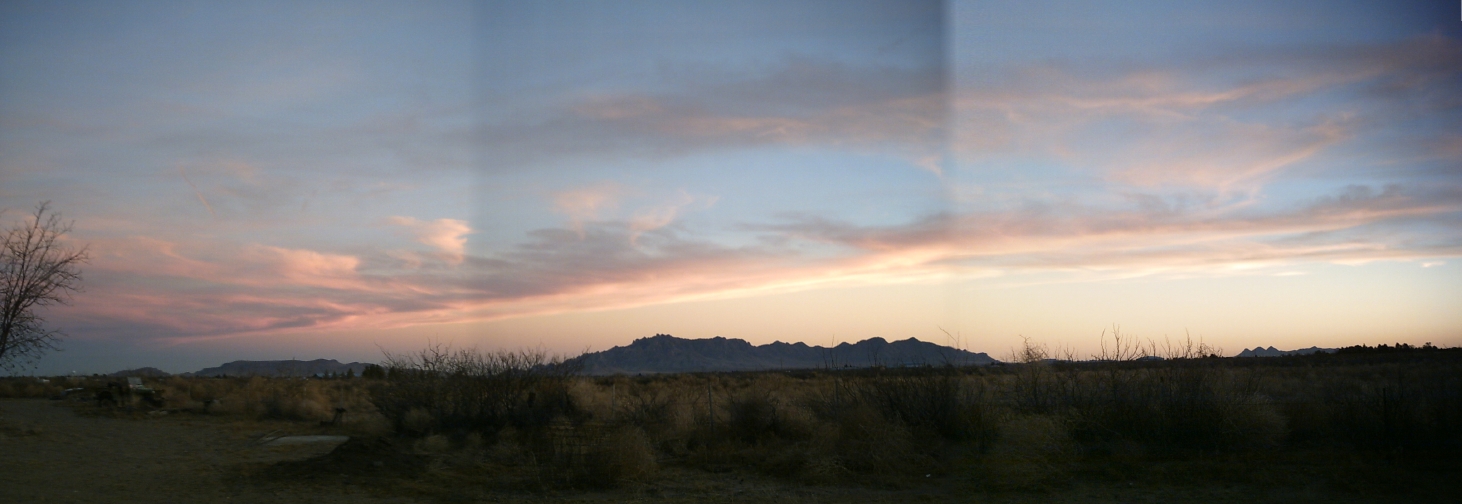
sunset image of the floridas taken from a pecan grove. new mexico and the
southwest is famous for it's night colors, and artists have come from all over
the world to paint and photograph the landscapes and blue, red pink and white
are a very common theme in paintings, along with colors for houses and buildings
to the right you can see the three sisters mountain range
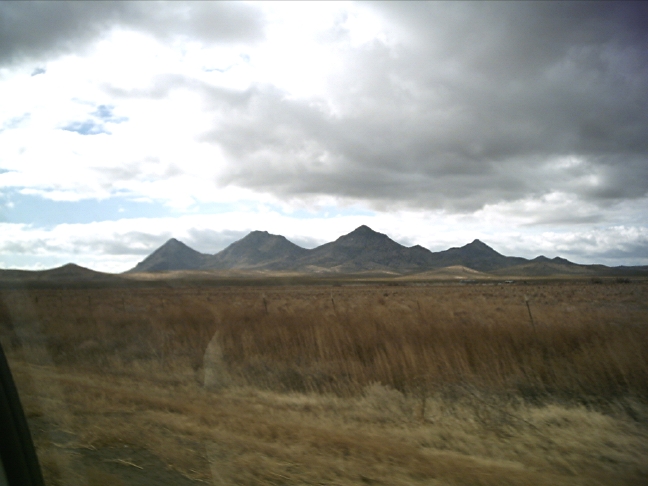
if you were to travel south of deming to palomas, mexico, you would pass between
the floridas mountains and the small three sisters mountain range (seen here)
these two ranges used to be connected, but land shifts moved the three sisters
away from the floridas

in deming there is an amazing museum of local and nearby/new mexico history.
local people have and continue to pool their collections of indian artifacts, local and distant
geological/mineral/crystal findings and anything else of interest to the local residents.
in this display case, there were indian items that had been given to non-
indian people as gifts. some are slightly old and a few very old. I happened
to spot a native slipper orchid that was the main design theme of a beaded
necklace! imagine being in the desert and spotting jewelry containing a plant
that only grows in continually moist areas! I'm not sure if it depicts a showy
ladyslipper or one of the other ladyslippers found in the northwest or canada
I guess this is good for a start, I'll have more later as I have time to edit and upload more pictures
mmm, yes; I forgot to mention that there are many excellent mexican/southwestern
restaurants in the area, and most of them are very good! :drool:
too bad there aren't more of them around here
Many were with a very cheap digital camera I bought years ago to record overall site images where I
was photographing native orchids; I forgot that it had a close-up/wide angle setting, and also forgot that it
had three settings for resolution and I had it on low-res at the beginning
be a bit out of focus. Later on I had a clue and adjusted for the picture style
very well for brightness as images from my small camera can't be adjusted in my 'fancier' image program as well,
so you can see where the images were spliced together
New Mexico is kind of a quiet state; at least up here in upstate ny you don't hear much about it, and even when
I was visiting other relatives up in wyoming, people around there often hadn't heard much about it. Turns out
there is a tremendous amount of history to be found and seen there, along with a whole lot of natural scenery,
wildlife, geology and anything else you could imagine (yes, roswell nm is there for you ufo fans, though I
didn't go anywhere near it
pepper growing and processing and are likely the chile capital region of the united states! (nyeric got a sample
of jolokia hot pepper sauce designed by the new mexico state university ag or food science dept. - I only tried
a tiny bit of salsa with jolokia hot sauce in it... :sob: no thanks to any more! )
There really is a lot to see and do in New Mexico and the surrounding region and it would take a fair amount of
time to see it all. Though it is desert, (deming only gets 9 inches of rain on average) there is quite a bit of
agriculture there including two wineries, thanks to a very large and clean aquifer created by a river that
starts around 40 miles away from runoff of one of the many mountain ranges in the area. Deming is sort of
'in the middle' of a valley between many mountains, both individual and long range forms. Most are volcanic
in nature and some are from uplifting and folding caused by movement of volcanic materials underground
long ago. I believe the lower valley area was formed by a volcanic dome that settled. Some mountains were
once connected and land shifts have stretched them apart. There are still hot and/or warm springs in the area,
and people who utilize the warm water underground for heating purposes.
I'll probably be making multiple threads to handle all of the pictures

one prominent feature in the area is the floridas (flor-ee-das) mountain range
in this image taken from the rockhound state park, you can see the floridas
on the left, and a group of images of mountains in the distance merged together.
towards the right you can see one edge of the city of deming. the rockhound state park
allows rv's for camping, and you are allowed to collect and take home 15 lbs of minerals or crystals a day
at this park, you can find geodes, thundereggs, many color forms of jasper, many forms of quartz
and other interesting things! there are many state and federal parks in this area, and rv's are very welcome
some parks are designed and created for summer use; it gets very hot, and these parks
are more inviting (up in some of the small hills/mountains) in summer as it is a fair
bit more cooler there at that time

sunset image of the floridas taken from a pecan grove. new mexico and the
southwest is famous for it's night colors, and artists have come from all over
the world to paint and photograph the landscapes and blue, red pink and white
are a very common theme in paintings, along with colors for houses and buildings
to the right you can see the three sisters mountain range

if you were to travel south of deming to palomas, mexico, you would pass between
the floridas mountains and the small three sisters mountain range (seen here)
these two ranges used to be connected, but land shifts moved the three sisters
away from the floridas

in deming there is an amazing museum of local and nearby/new mexico history.
local people have and continue to pool their collections of indian artifacts, local and distant
geological/mineral/crystal findings and anything else of interest to the local residents.
in this display case, there were indian items that had been given to non-
indian people as gifts. some are slightly old and a few very old. I happened
to spot a native slipper orchid that was the main design theme of a beaded
necklace! imagine being in the desert and spotting jewelry containing a plant
that only grows in continually moist areas! I'm not sure if it depicts a showy
ladyslipper or one of the other ladyslippers found in the northwest or canada
I guess this is good for a start, I'll have more later as I have time to edit and upload more pictures
mmm, yes; I forgot to mention that there are many excellent mexican/southwestern
restaurants in the area, and most of them are very good! :drool:
too bad there aren't more of them around here




